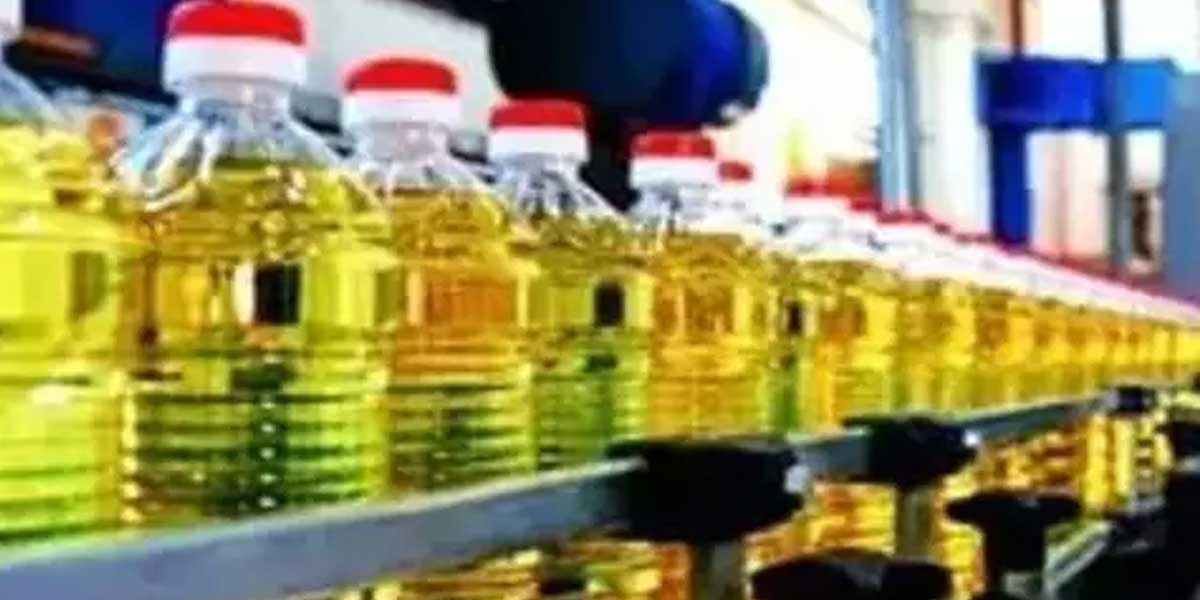
Andhra Pradesh over the years has managed to capitalise on its abundance of palm cultivation. For oil palm farmers this meant they saw a lot of profit without having to go through middlemen to sell their produce. It’s certainly been a win-win for farmers as the State stands first in the country in oil palm cultivation with an area of 1.81 lakh hectares, being cultivated by 1.32 lakh farmers in eight districts. A memorandum of understanding (MoU) has been signed between the state government of Andhra Pradesh (AP) and Godrej Agrovet (GAVL), one of India's top diversified agribusiness companies, on the sidelines of the Andhra Pradesh Global Investors Summit (APGIS) 2023.
Oil palm cultivation has already increased significantly in the state. According to the earliest data that is currently available, three provinces were growing oil palm in 1993. With 14051 tonnes, Kerala had the highest yield of fresh fruit bunches, far outpacing Andhra Pradesh's 58 tonnes. With a yield of 194,000 tonnes, Andhra Pradesh had the highest in the nation in 2007–08. This was attributed to the crop's promotion by the provincial government.Of all the states today, Andhra Pradesh has the most land under oil palm cultivation (0.17Mha), with a yield of 1.38 million tonnes of fresh fruit bunches.
However, despite maintaining a reputation of being a leading palm oil producer over time many farmers started switching to conventional crops like corn, paddy, and other staples instead of palm oil. There are many important factors and problems that these farmers had to deal with on a daily basis that have contributed to their lack of interest in growing palm oil.
The maximum average rainfall that Andhra has ever experienced was 1018 mm in the year 2013. The recommended annual average rainfall for palm cultivation is 2500 mm.
In accordance with the MoU, GAVL's oil palm division will invest an estimated INR 100 crores to build an Edible Oil Refinery & Solvent Extraction Plant manufacturing facility. Godrej Agrovet intends to use the proposed facility for full operations by 2025–2026. With the help of a cogeneration plant, the factory will be self-sufficient in terms of power needs. The extension team at 10 Godrej Samadhan centers will provide support for palm oil farmers. In fact, Telangana has set an ambitious goal of expanding palm oil plantations to 20 lakh acres in the state. The state government is aggressively promoting palm oil plantations to reduce dependence on imported oil.
A 1.12 lakh hectare area in the State is proposed to be covered under the oil palm mission. The State has been given the following year-by-year targets under NMEO-OP: 15,000 hectares in 2021–22, 20,000 hectares in 2022–23, 24,000 hectares in 2024–25, and 28,000 hectares in 2025–26.The minister claimed that 8,801 hectares of land were planted with oil palms after spending Rs 30.60 crore on an oil palm development program in 2021. With the money allocated for 2021–2022, 10,561 hectares of oil palm have been planted, and an additional 14,567 hectares have been identified for oil palm cultivation, out of the 15,000 hectares that were originally planned.
Currently, Godrej is present in Khammam and Bhadradri Kothagudem districts, which make up 10 mandals in Telangana. It will use digital resources like farmer apps, the Sapling portal, image-based crop advisory services, satellite/drone tracking of cropland, etc. in the area to increase productivity. Oil palm plantations produce 19.81 tonnes FFB (fresh fruit bunches) on average per hectare. The state produced 2.40 lakh tonnes of crude palm oil in 2020–2021. In the state, there are 13 oil palm processing facilities with a 461 metric ton per hour FFB crushing capacity. Earlier, Hyderabad-based Gemini Edibles and Fats India (GEF) had announced to set up an oil refinery in Telangana with Rs.400 crore.
What’s the fate of palm oil production in Andhra Pradesh?
In a meeting with representatives of the Horticulture Department on Wednesday, State Agriculture Minister K Kanna Babu gave them instructions to promote oil palm cultivation as an alternative to paddy, particularly in dry land areas.
According to an official statement from the minister, AP now leads the nation in oil palm cultivation, with an area of 1.81 lakh hectares spread across eight districts of the state.
19.81 tonnes of Fresh Fruit Bunches were produced per hectare by as many as 1.32 lakh farmers who cultivated oil palm.
According to the minister, the state produced 2.40 lakh tonnes of crude palm oil in 2020–21.
According to Kanna Babu, the state government invested Rs 30.60 crore in the Oil Palm Development Program in 2020–21, totaling 8,801 hectares.


















